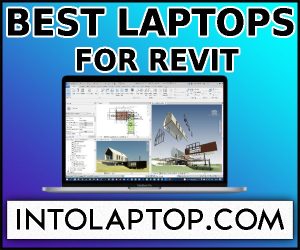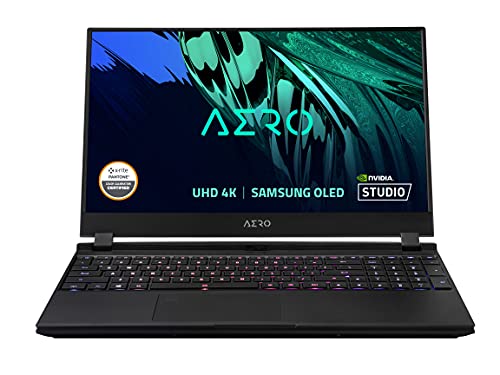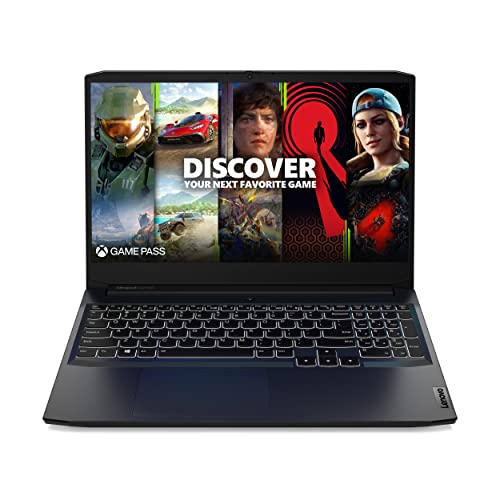For those looking for the Best Laptops for Revit, the options can seem endless.
With the endless range of specs, features, and models, it can be difficult to decide which laptop is best suited for your Revit projects.
It’s important to keep in mind the type of project you plan to work on, as well as the hardware requirements for Revit when making a purchase.
This article will provide an in-depth look into the best laptops currently available for running Revit software and why they are the top choices.
Also Read: Best Laptop for Construction Managers
Best Laptops for Revit
1. Gigabyte Aero 15
The Gigabyte Aero 15 is the latest laptop and one of the Best Laptops for Revit to catch the eye of tech enthusiasts.
Its slim design and powerful specs have made it a popular choice for people looking for a laptop that can multitask and handle intensive workloads.
- NVIDIA GeForce RTX 3080 Laptop GPU 8 GB GDDR6
- Boost Clock 1245 Mhz & Max Graphics Power of 105W
- NVIDIA DLSS for groundbreaking AI rendering
- 11th Gen Intel Core i7-11800H (2.3GHz~4.6GHz)
- 16GB Memory (64GB Max), 1TB SSD
With an Intel Core processor and an NVIDIA GeForce GTX graphics card, the Gigabyte Aero 15 has plenty of power to handle the most demanding tasks.
In this review, we’ll take a closer look at the specs and features to determine whether this laptop is right for you.
The Gigabyte Aero 15 boasts a super thin design and a sleek black finish.
It’s packed with impressive hardware, including the latest 10th Gen Intel® Core™ i9-10980HK (2.4GHz~5.3GHz) processor and an NVIDIA® GeForce® GTX 1660 Ti GDDR6 6GB graphics card.
It also features a 15.6 inch Full HD screen and an ample 512 GB PCIe SSD and 16 GB of RAM.
On top of that, the Aero 15 is also fairly light, which makes it incredibly easy to travel with.
Gigabyte Aero 15 laptop is one of the Best Laptops for Revit in the market.
We’ll dive deeper into the performance, design, and battery life of the Gigabyte Aero 15 in the following review.
Also Read: Best Budget Friendly Laptops for Engineering
a). Design
The Gigabyte Aero 15 is an ultra-slim laptop that offers all the functionality of a powerful laptop in a sleek, stylish package.
The design of the laptop is modern and minimalistic, making it look great in any office space, and the slim form factor makes it easy to transport from place to place.
The laptop is constructed out of lightweight aluminum, making it not only durable but also lightweight for its size.
The Aero 15 features a 15.6-inch 1080p IPS display, with thin bezels, offering a high-quality viewing experience for multimedia, gaming, and more.
The keyboard is of great quality, offering a comfortable typing experience, with each key providing a good amount of tactile feedback and a springy feel with each press.
The touchpad is also great, providing perfectly smooth cursor control and accurate multi-finger gestures.
The laptop is equipped with a fingerprint reader and webcam, adding convenience and security.
The laptop offers a variety of ports, including USB-C and Thunderbolt 3, HDMI and Mini Display Port, and a 3.5mm headphone jack.
Overall, the Gigabyte Aero 15 offers an excellent design and build, with high-quality materials and attention to detail.
It’s an attractive ultra-slim laptop that packs a lot of quality and power into its thin form factor, making it an excellent choice for work or play.
BUY NOW ON AMAZON
b). Display
The Gigabyte Aero 15 as the Best Laptops for Revit comes with an impressive display and can provide a stunning experience for gamers and creative professionals.
The 15.6-inch IPS panel features an incredible level of detail and clarity thanks to its Full HD resolution of 1920×1080 and its vivid colors supported by 100% sRGB color gamut coverage made possible by X-Rite Pantone certification, making it excellent for photo or video editing and gaming.
Not only is the display of the Aero 15 vibrant and full of color, but it also features an impressively thin bezel for a mid-range model laptop and a 144 Hz refresh rate for quick-on-the-go response times.
The anti-glare panel ensures that no matter how bright the sun is, you can always get an enjoyable display experience.
The Gigabyte Aero 15 offers fantastic screen response times, allowing for smooth and precise gaming when needed.
The display also provides uniform light distribution for an overall fantastic image and video performance.
To conclude, the display of the Gigabyte Aero 15 is sharp and vibrant and is a great choice for Revit users and creative professionals who need a laptop with reliable display capabilities.
With its Full HD resolution, colorful visuals, thin bezel, and 144 Hz refresh rate, the Aero 15 displays stand out in terms of overall quality.
- NVIDIA GeForce RTX 3080 Laptop GPU 8 GB GDDR6
- Boost Clock 1245 Mhz & Max Graphics Power of 105W
- NVIDIA DLSS for groundbreaking AI rendering
- 11th Gen Intel Core i7-11800H (2.3GHz~4.6GHz)
- 16GB Memory (64GB Max), 1TB SSD
c). Audio
The Gigabyte Aero 15 is equipped with a two-armed speaker system, two woofers, and two tweeters to ensure a premium audio experience.
This system delivers an impressive sound stage with plenty of clarity and detail at both low and high frequencies.
The overall sound quality is well-balanced and detailed and capable of producing impactful and punchy bass as well as delivering an immersive listening experience.
The laptop also features Nahimic audio software which provides impressive audio performance settings. With a simple tap of the function key, you can access this software to adjust the audio settings to your personal preferences.
The software also offers virtual surround sound that can be enabled to simulate a multi-speaker system in a given environment, providing a more immersive experience.
The built-in microphone is also quite impressive.
It comes with a noise-canceling feature that filters out unwanted ambient noise to provide a crystal-clear experience.
Overall, the Gigabyte Aero 15 laptop has some impressive audio capabilities, which are suitable for both movies and music.
The two-armed speaker system allows users to enjoy clear, detailed soundtracks with plenty of bass, while the software enhancements enhance the overall audio quality.
For those who want a powerful audio experience on a laptop, the Gigabyte Aero 15 is a great laptop to consider.
d). Performance
In terms of real-world performance, the Aero 15 is able to handle all sorts of demanding tasks and applications with ease, from video editing and streaming to gaming and graphic design.
This laptop can easily handle multitasking and handle multiple applications without any noticeable slowdown.
While using Revit, the graphics card and 144Hz display deliver smooth and high-quality visuals.
When running intensive tasks, the powerful CPU and RAM combination ensures that the Aero 15 is able to remain responsive and handle any tasks thrown it’s way.
The battery life on this laptop is also good, with the Aero 15 able to last around 7 hours with general tasks.
Overall, the Gigabyte Aero 15 laptop is an excellent choice for those looking for a powerful and capable laptop.
Its impressive performance, high-quality display, and solid battery life make it stand out from the competition.
If you need a powerful laptop for gaming, streaming, or graphic design, the Aero 15 is a great choice.
- NVIDIA GeForce RTX 3080 Laptop GPU 8 GB GDDR6
- Boost Clock 1245 Mhz & Max Graphics Power of 105W
- NVIDIA DLSS for groundbreaking AI rendering
- 11th Gen Intel Core i7-11800H (2.3GHz~4.6GHz)
- 16GB Memory (64GB Max), 1TB SSD
e). Battery Life
Gigabyte Aero 15 is known for its long-lasting battery life.
It has a 94.24 Wh battery that allows you to browse, stream and multitask with ease.
The laptop is capable of running for full 8-hours even with average usage, making it an attractive option for businesses and people working on the go.
The laptop’s longevity is further enhanced by its ‘Battery Saving Mode’ which optimizes the laptop’s battery usage to help you run your applications and work for a longer period of time.
This proves to be a great advantage when you’re on the road and don’t have a regular power source.
In conclusion, the Gigabyte Aero 15 is a great choice for those who want a laptop that offers plenty of power and features in a slim design.
Its bright display, long battery life, great audio, and high performance make it an excellent choice for both home and office use.
For the price, it’s an extremely capable and well-rounded laptop, and this review has shown that it is capable of meeting the needs of many different users.
If you’re looking for a laptop that balances power, portability, and features, the Gigabyte Aero 15 is certainly worth considering.
BUY NOW ON AMAZON
2. Apple MacBook Pro
Apple’s MacBook Pro is a popular laptop choice among many individuals using Revit regularly and is rated as one of the Best Laptops for Revit.
For years, people have appreciated the sleek design and powerful computing capabilities that are a hallmark of the product line.
The MacBook Pro has been one of the most popular laptop options in the market since it was released.
It has earned a reputation as being a reliable and secure machine with superior performance capabilities.
Please be informed that Apple’s MacBook Pro laptop is one of the Best Laptops for Revit in the market.
This review will examine the new design, features, and specifications in order to determine how it compares to previous models and determine whether it is an appropriate laptop for your needs.
a). Design
The Apple MacBook Pro is a sleek and stylish device, combining a sleek metal finish with modern aesthetics to create the perfect laptop for power users and everyday needs.
The silver aluminum chassis is lightweight and rust-resistant, while the black bezel is both modern and stylish.
The display screen is a glossy Retina display with a 13.3-inch diagonal size, contributing to an overall weight of just 3.02 pounds.
The keyboard has an illuminated backlit design for convenience and ease of use, and the trackpad is made of glass with multitouch gestures and Force Touch technology for better navigation.
So typing is comfortable and convenient. The laptop also features an HD FaceTime camera for video chat, dual microphones, and speakers.
Overall, the Apple MacBook Pro is an aesthetically pleasing device with modern features that make it the perfect laptop for everyday use.
Its lightweight design makes it ideal for school and work, while the powerful performance and long battery life ensure that the laptop can handle any task you throw its way.
b). Performance
When evaluating the performance of the Apple MacBook Pro, the results are impressive.
Thanks to the 8-core CPU with 4 performance cores and 4 efficiency cores, the MacBook Pro provides great performance in everyday tasks like web browsing, document editing, and video streaming.
In more intensive applications, such as video editing and gaming, it delivers a significant boost to performance over its predecessor.
In terms of battery life, the Apple MacBook Pro offers up to 17 hours of wireless web browsing and up to 20 hours of movie playback. It also offers powerful performance thanks to its GPU and 16GB of RAM.
Overall, the performance of the Apple MacBook Pro is impressive and more than capable of handling everyday tasks and more intensive applications with ease.
With a powerful processor, ample memory and storage, great graphics, and impressive battery life, it offers excellent value for money.
c). Storage and Memory
The Apple MacBook Pro offers a great selection of powerful storage and memory options.
Its impressive 64GB of RAM provides smooth multitasking and quick app switching, so you can easily get work done quickly.
The MacBook Pro also offers plenty of possibilities for storage needs.
This laptop comes with a 2 TB SSD and it offers plenty of room for large files and projects, such as photographs and videos.
The SSD also allows you to access data faster than a regular hard drive.
These features allow the MacBook Pro to stand out in the world of storage and memory.
Not only are the specs impressive, but Apple takes storage and memory flexibility to a new level. So, if you’re in the market for a laptop with plenty of speed and space, the MacBook Pro is certainly worth considering.
Overall, The Apple MacBook Pro is a great laptop for those who are looking for a powerful, stylish, and user-friendly machine.
With powerful components, a modern design, and the best user experience, it is the perfect choice for anyone who wants a laptop that will last for years.
It’s great for Revit users, students, professionals, and all the way around.
With its great features, the Apple MacBook Pro is the best laptop for anyone who wants to stay ahead of the curve in performance, design, and reliability.
BUY NOW ON AMAZON
Also Read: Best Apple MacBook Laptops
3. Lenovo IdeaPad Gaming 3
The Lenovo IdeaPad Gaming 3 is a great and one of the Best Laptops for Revit users looking for a machine that packs a punch.
- Fueled by the revolutionary AMD Ryzen 5000 H-Series mobile...
- Includes free 3-month trial of Xbox Game Pass Ultimate -...
- 15.6" FHD (1920 x 1080) IPS display with NVIDIA GeForce GTX...
- 8GB 3200 MHz DDR4 RAM memory and 256GB M.2 PCIe SSD storage
- 2 x 2W speakers with Nahimic Audio for Gamers; spacious...
This laptop packs a punch with its AMD Ryzen™ 5 5600H Processor (3.30 GHz up to 4.20 GHz), powerful NVIDIA® GeForce® RTX™ 3050 Ti Laptop GPU 4GB GDDR6 and high-speed 8 GB DDR4-3200MHz RAM, making it an ideal laptop for Revit and other power users.
The IdeaPad Gaming 3 offers a wide range of features, making it an all-in-one gaming powerhouse.
As far as design goes, the IdeaPad Gaming 3 features a sleek and slim design that looks great.
It has a matte black finish, which adds a modern touch to the laptop.
On its frame, there are dual cooling fans and the rear venting design helps keep the laptop cool even during intense working sessions.
The IdeaPad Gaming 3 features a backlit keyboard which is a must-have for Revit users.
The keys are easy to press and the gaming-grade keystrokes make the laptop perform better than other mid-range laptops.
The laptop also has a dedicated numeric keypad and the colorful backlight gives you the ability to adjust the brightness and color of the backlight depending on your needs.
The trackpad is also great and it is reliable and responsive.
The IdeaPad Gaming 3 is having a great display with this model. It has a 15.6″ FHD (1920 x 1080) display.
The display is bright and fast and the colors look vibrant and sharp which is very essential for Revit users.
The IdeaPad Gaming 3 also has some good sound capabilities with stereo speakers.
The sound quality is great and you can tailor the settings as you need it to get the best gaming experience.
Overall, the Lenovo IdeaPad Gaming 3 is a great laptop for Revit users and one of the Best Laptops for Revit in the market.
It features a sleek design, a good display, great sound, plenty of ports, and powerful hardware. If you are looking for a reliable laptop for Revit, the IdeaPad Gaming 3 is a great choice.
BUY NOW ON AMAZON
Also Read: Best Lenovo Laptops
4. Razer New Blade 15
The Razer New Blade 15 can be the ultimate choice for a Revit user and of course one of the Best Laptops for Revit.
- NVIDIA GeForce RTX 30 Series Graphics for Stunning Visuals:...
- Intel 11th Gen 8-Core CPU for All-out Gaming Performance:...
- Next-gen Displays to Meet Your Needs: Go with ultra-fast...
- Vapor Chamber Cooling for Maximized Thermal Performance: The...
- Advanced Connectivity for Greater Convenience: With built-in...
It offers a perfect blend of power and portability, making it an ideal choice for anyone looking for a laptop for both gaming and everyday use.
The sharp design and interactive user experience are further complimented by impressive hardware and performance.
The 15-inch FHD 360Hz, QHD 240Hz (G-SYNC or OLED) or 4K 144Hz display provides smooth visuals and is powered by a 12th Gen Intel® Core™ i7 Processor (14-core), 16GB or 32GB RAM (DDR5 4800MHz), and a 1TB with an extra M.2 slot.
The graphics are powered by Up to GeForce RTX™ 3080 Ti Laptop GPU.
One of the best features of the Razer New Blade 15 laptop is its design. The slim aluminum chassis is both lightweight and sturdy, with an eye-catching anodized finish that evokes a powerful gaming feel.
As for gaming performance, the Razer Blade 15 excels.
The powerful processor and graphics card perform remarkably, with no noticeable lag when playing even the most demanding titles.
This is supplemented further by the use of an ultra-efficient cooling system for maximum heat dissipation.
The battery life of the Razer New Blade 15 is also a plus point.
This will give you enough battery life for a full working day or a comfortable gaming session without having to worry about plugging in.
All in all, the Razer New Blade 15 is a great value-for-money device with lots of features and power packed into it.
Razer New Blade 15 is one of the Best Laptops for Revit in the Laptop Market.
It is a great pick for those who want an all-around gaming laptop that provides a good balance of performance and portability.
BUY NOW ON AMAZON
Also Read: Best Razer Gaming Laptops
What to consider before purchasing your Best Laptops for Revit?
When it comes to purchasing the Best Laptops for Revit – Autodesk’s powerful architectural software – there are some important factors to consider.
Price, durability, power, and mobility are all essential elements of a good laptop for Revit.
This section will explore what you need to think about before purchasing a laptop for use with Revit, to ensure you get the most out of the software.
An ideal laptop for Revit should be able to handle the software’s memory-intensive tasks without slowing down your workflow.
It should also be a powerful enough machine to handle rendering and editing applications, while still remaining versatile enough to store and access your projects.
A laptop’s hardware should also be of a high enough quality that it can stand up to regular wear and tear, as well as be portable enough for carrying around as you work.
Furthermore, the laptop should be priced adequately for what you are getting.
a. Requirements
When it comes to buying a laptop for Revit, it’s important to consider what kind of requirements you will need it to meet.
First and foremost, you should check the system requirements for the version of Revit that you are using.
This will be your starting point for determining any necessary specifications for the laptop.
Another factor to consider is your budget. Laptops for Revit can range greatly in price, depending on the features and power that you require.
You’ll have to decide how much you are comfortable spending and what features are a priority for you.
In terms of performance, it’s essential to look at the laptop’s processor,
RAM, GPU, and storage capacity. If your workload is intensive, you’ll need a laptop with a powerful processor, ample RAM and memory, and a dedicated graphics card.
Additionally, if you’re dealing with large datasets, you may want to opt for an SSD drive, which provides faster read/write speeds and greater storage capacity.
It may also be helpful to consider the size and weight of the laptop that you want to buy.
If you need to be able to work in different environments, you’ll want to look for a lightweight model that’s easy to transport.
Also, keep in mind the size of the laptop’s display and its resolution—the bigger the display, the better for Revit users.
By considering all these factors and understanding your requirements, you can be sure to find the perfect laptop for your Revit needs.
b. Operating System
When choosing a laptop for Revit, the operating system is an important consideration.
Modern versions of Revit support both Windows and macOS, but they tend to be more stable and reliable on Windows computers.
Additionally, for high-end features like Autodesk Cloud, Multi-User Collaboration, and work sharing, you’ll need at least Windows 10.
Installing a high-end operating system may also require a laptop with more RAM or storage capacity than the minimum requirements, so plan accordingly.
For users who prefer the slim design and quality feel of Macs, Apple does offer Mac versions of Revit, but feature support is limited compared to the Windows version.
Organizations utilizing specialized features in the Windows version may encounter compatibility issues with the Apple version.
In conclusion, when purchasing a laptop for Revit, Windows is the preferred choice since it offers the most stable and feature-packed experience with AutoDesk Revit.
c. Processor
When buying a laptop for Revit, the processor is arguably the most important component.
Modern laptops are equipped with a variety of processor models, and understanding the differences between them can help make it easier to select the right laptop for the job.
The two most popular processor brands for laptops are Intel and AMD.
Generally speaking, Intel processors are a safe choice for users that don’t need the latest and greatest, as they typically offer performance that is good enough for most applications.
Intel also has the advantage of being compatible with most software packages.
Regardless of whether you go with Intel or AMD, choose a processor with at least 4 cores and 8 threads, as this is the minimum requirement to run Revit efficiently.
Also, look for a processor that has a clock speed of 3.0 GHz or higher.
Ultimately, the processor is the most important part of a laptop for Revit, so make sure you get one that can handle the heavy-duty tasks associated with the software.
d. Graphics Card
When selecting a laptop for running Revit, the graphics card should also be taken into consideration.
While also helpful in more general computing tasks, the graphics card can significantly improve the performance of Revit.
For specialized CAD and rendering tasks, a powerful graphics card is important, so it is important to look for laptops with GPUs that have powerful computing and graphics performance.
A powerful dedicated GPU is important for the best Revit performance. Look for GPUs from major manufacturers like Nvidia, AMD, or Intel Iris.
These GPUs should be able to handle intensive tasks such as ray tracing and shader processing.
For the best performance, we suggest getting the highest-end GPU you can afford. A dedicated GPU with 2-4 GB of video memory should be decent for most Revit projects.
High-end GPUs with 6-12 GB of RAM will provide better performance but may be too expensive for many users.
e. Storage Type and Capacity
When looking for a laptop to use for Revit programs, an important factor to consider is the storage type and capacity.
Solid state drives (SSD) offer faster data transfer rates compared to hard disk drives (HDD) while also being more reliable and more resistant to damage than an HDD.
However, SSDs can be more expensive compared to HDDs.
A laptop with at least two drives, especially a combination of an SSD and HDD, is highly recommended to ensure a smooth experience when running Revit on the machine.
For storage capacity, consider the current and future needs of the laptop.
Do you need to store large projects that require a lot of space on the drive or are the needs limited to smaller projects or files?
Generally, getting a laptop with a minimum of 256GB of storage is recommended, but if large projects are expected, look for models with at least 512GB.
When looking for a laptop, also consider if additional storage can be added externally.
Some models may come with an SD card slot or USB TypeC port with which an external drive can easily be connected.
This can provide additional space to store projects, Autodesk Revit initial files, or other important software and files.
By weighing the options carefully, you can find the right laptop with the right type and capacity of storage that fits your needs and budget.
By doing this, you can ensure a smooth experience when running Autodesk Revit programs, and avoid issues such as system crashes or decreased performance due to the lack of storage space.
When looking for a laptop for Revit, don’t just settle; do your homework and make sure that you get what you need to get the most out of Revit.
Be mindful of the graphics and processor, storage, RAM, and battery life.
No two laptops are the same, so take your time and don’t rush into the purchase.
Weigh your options carefully so you can be sure that you’re investing in the best laptop for your Revit projects.
Does Revit require a lot of RAM?
When it comes to digital design platforms like Autodesk Revit, RAM (Random Access Memory) can make a huge difference in the performance of the program.
RAM is essential for allowing Revit (and any software, really) to run quickly, with minimal lag or slowdown.
That said, Revit doesn’t require as much RAM as some other programs or games might.
In general, 8 to 16GB of RAM should be sufficient for basic modeling and rendering using Revit.
Of course, this isn’t a hard and fast rule.
Depending on the complexity of the models and renderings you’re attempting, and the other applications running on your system, you may need more or less RAM to optimize your Revit workflow.
In addition to the amount of RAM you have, the speed and type are important as well.
When it comes to RAM, faster usually means better. Revit requires DDR4 RAM(the faster the RAM, the more efficient the program will perform).
Because of the lack of compatibility and limitations of certain projects, you’ll want to use high-capacity RAM sticks so you can better spread out the workloads.
The RAM requirements for Revit will also depend on the complexity of the model itself.
For smaller models, even a system with just 4GB of RAM can be sufficient, however larger and more complex models could require anywhere up to 32GB of RAM for the best performance.
Generally speaking, the more RAM you have, the better Revit will perform.
A computer with 8GB of RAM should be fine for basic tasks in Revit, but if you’re using a lot of 3D views or large models, you might have a better experience with 16GB or more of RAM.
Which is better for Revit – Intel or Ryzen?
When it comes to choosing the best processor for Revit, the debate between Intel and AMD Ryzen often comes up.
It’s a tough choice for any user, as both brands offer a range of powerful and reliable options.
Ultimately, the decision will depend on the kind of tasks you’re performing and the applications you’re using.
If you’re heavily reliant on graphics-intensive tasks, Intel is an excellent choice.
Their CPUs are known for offering high clock speeds and their integrated graphics are perfect for rendering. They’re also more efficient when it comes to certain tasks.
In contrast, AMD Ryzen is best known for its multitasking capabilities, allowing users to switch between multiple applications without a major decrease in performance.
When it comes to using Revit, Intel CPUs can be more expensive, but they offer excellent performance and reliability.
From creating models to working with large datasets, they’re more than capable of handling the workload.
Intel processors also have the advantage of supporting HyperThreading, which helps with multitasking and enables faster processing speeds.
However, AMD Ryzen processors offer a more cost-effective solution for Revit users.
They have powerful cores and are ideal for multitasking, making them great for when you have to work with multiple files and applications at the same time.
Their integrated graphics are also good enough for basic 3D rendering tasks.
Although not as fast as Intel’s integrated graphics, they’re more than capable for most Revit projects.
In short, choosing between Intel and AMD Ryzen for Revit will depend largely on your individual needs and preferences.
Intel processors are more powerful and offer excellent performance, but they can be quite expensive.
AMD Ryzen offers a more cost-effective alternative, with the added advantage of being ideal for multitasking.
Ultimately, the best processor for Revit will depend on the type of tasks you’re performing, the size of your project, and how much you’re willing to spend.
Are 4 cores enough for Revit?
When it comes to working with Revit software, it can be an incredibly powerful tool for 3D modeling and design, but it’s also one of the most hardware-intensive programs to use.
So much of the design process can be easily and efficiently handled using Revit that it has quickly become a staple in the design world, but all that processing power requires a great computer.
First, the minimum system requirements that the makers of Revit say a user should be utilizing is at least 8GB of RAM and an Intel or AMD processor with four real cores.
Of course, these are the absolute minimums to even get the software working and by no means high enough for actually running Revit on a day-to-day basis.
If you want to get the most out of Revit, it’s suggested to go up to 8 cores. That being said, 4 cores can still be sufficient, as long as there are supporting components in place.
The most important considerations are the RAM and the graphics card. Both should be at least mid-range, if not higher, as they will take some of the load off the processor.
Beyond that, a good solid-state drive can also be beneficial.
The faster and larger the drive, the better the performance overall. Additionally, a good cooling system is important for keeping the processor running smoothly, as heat can slow down Revit’s performance significantly.
All of the above factors should be weighed when determining if 4 cores are enough for Revit.
If the user has all of the supporting components in place, then 4 cores could be sufficient. If not, then it may be worth considering a processor upgrade.
At the end of the day, 4 cores are not enough for most, but they may be sufficient for running Revit if all other components are strong and the workload is relative.
Each user will have their own specific needs and budget to work within, so it is the individual who ultimately decides whether 4 cores are right for them.
How do I make Revit run smoother?
When it comes to getting the most out of Revit, there are several different strategies for improving the performance and making it run smoother.
Whether you’re a professional designer working with large 3D models or a casual hobbyist just getting started with the software, there are several tips and tricks that will help you get more out of Revit and make it run smoother.
The first step to making Revit run smoother is to optimize its settings. Revit comes with several default settings, but they aren’t always optimized.
You can fine-tune these settings to improve the performance of your machine by going to the Revit Options panel.
From here, you can adjust a variety of settings such as graphics, viewport performance, rendering, and memory usage.
Another way to make Revit run smoother is to manage your hardware resources effectively.
When you are working with complex projects and large data sets, it is important to make sure that your machine has enough RAM and CPU power to handle the workload.
Upgrading to a more powerful machine or adding additional RAM will help Revit run more smoothly. Additionally, you may also want to consider using a dedicated graphics card for demanding tasks.
A third way to improve the performance of Revit is to use the various tools available to you.
For example, Revit includes a “purge” tool, which can help you clean up redundant objects and materials from your project that are no longer needed.
This can help free up resources for Revit to effectively process the data it is dealing with.
Additionally, you can also turn off certain features that you don’t need or aren’t using, such as Sun study, batch printing, and scene visualizations.
Finally, another tip for improving Revit’s performance and making it run smoother is to keep your project files organized.
While Revit makes it easy to add and move objects around in a project, it also makes it easy to end up with a cluttered, disorganized project.
Keeping your project files organized—including all of your textures, materials, assets, and so forth—can help Revit process and render things more efficiently.
Conclusion about Best Laptops for Revit
At the end of the day, finding the right or Best Laptops for Revit depends on your budget and needs.
Even though there are countless brands, specs, and price points, the best laptops for Revit should be able to handle the software with ease and allow for an effortless and unobstructed design experience.
Ultimately, you should prioritize a laptop that can handle whatever your design workflow throws at it.
Investing in a machine that is powerful enough to support Revit ensures that you are able to efficiently and smoothly create your CAD renderings and designs in the most advanced way possible.
With the right laptop specifications, Revit users can be confident that their 3D models, beautiful visualizations, complex calculations, and architectural drawings can be created in short order.
Leave your queries if any about Best Laptops for Revit in the comment section.
LAPTOP BUYING GUIDE 2024
|
- 10 Best Laptop for Laser Engraving AMD Intel 2025 - March 9, 2024
- 11 Best Laptop for Mechanics Intel AMD 2025 - March 9, 2024
- 12 Best Laptops for Tattoo Artists 2025 - March 7, 2024
Last update on 2024-04-19 / Affiliate links / Images from Amazon Product Advertising API

















